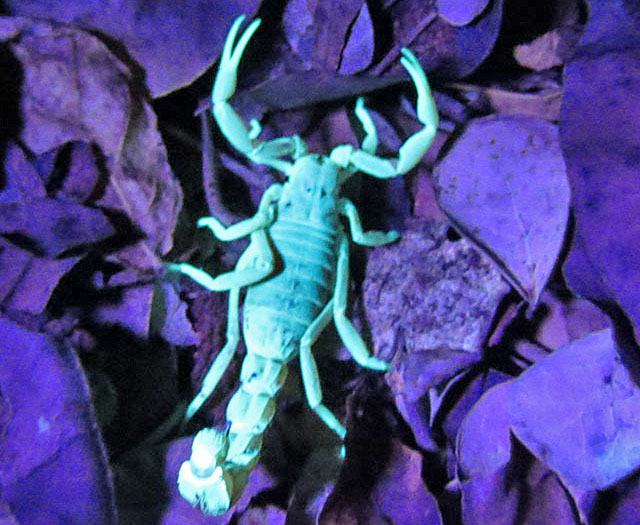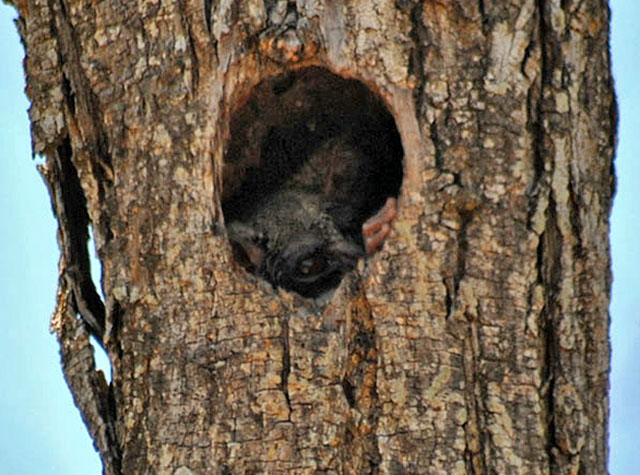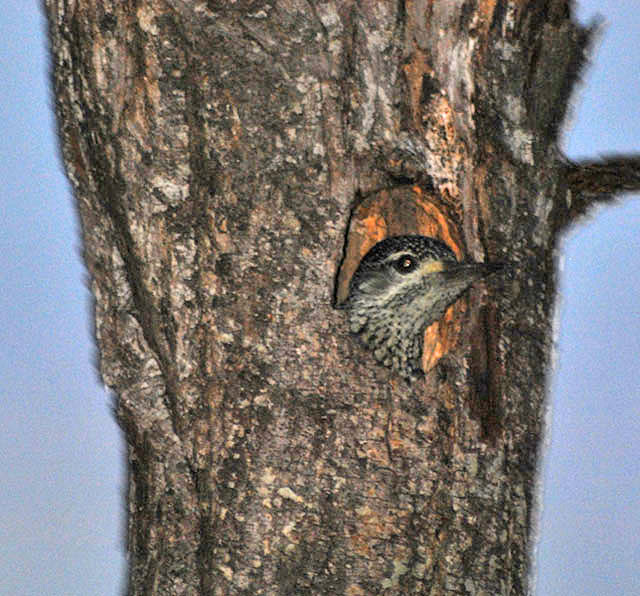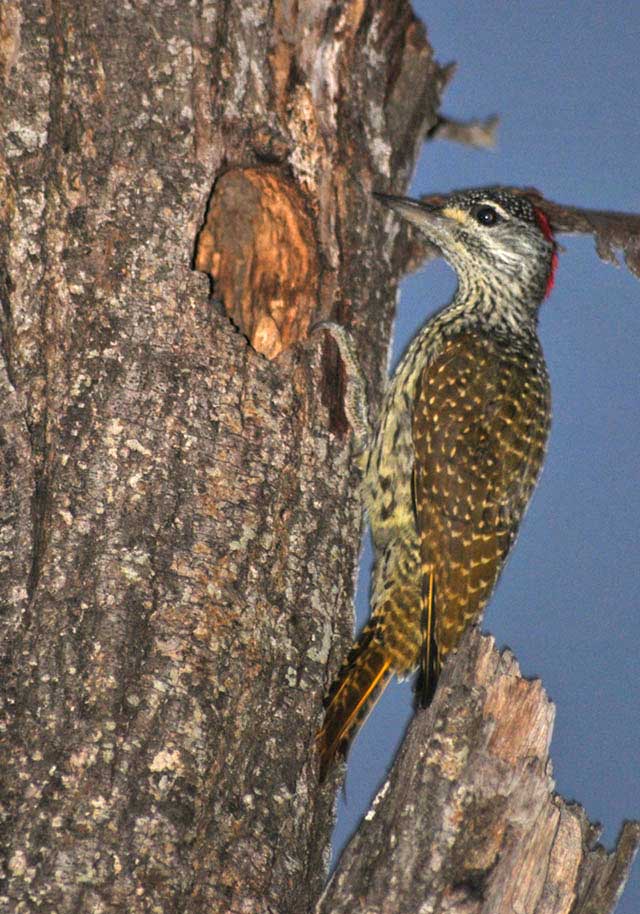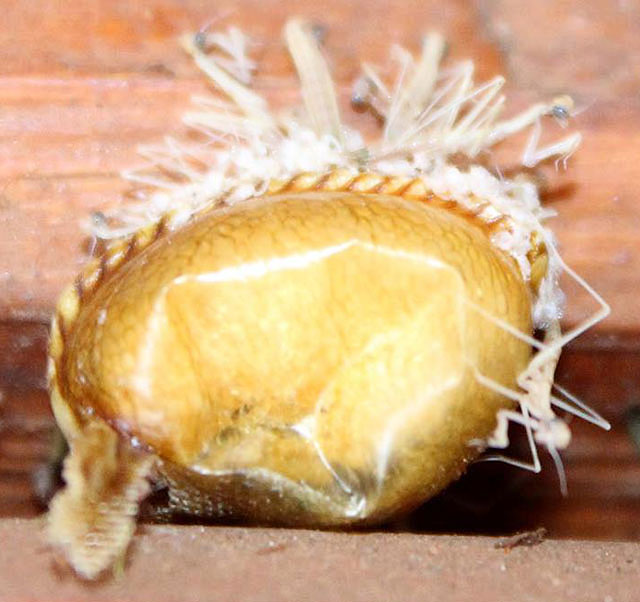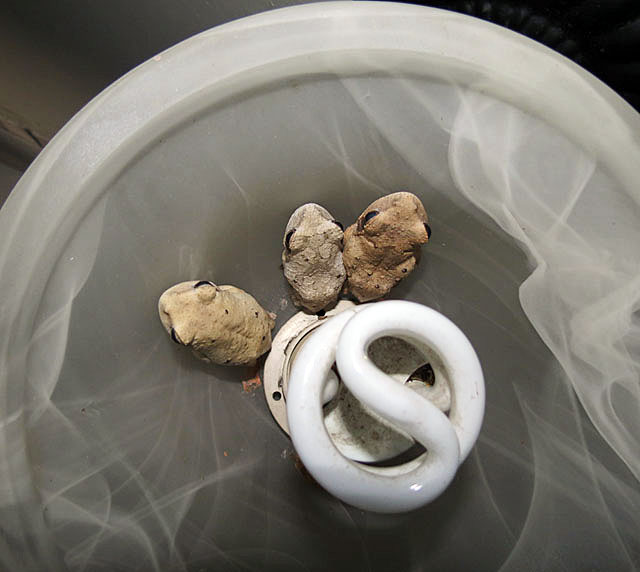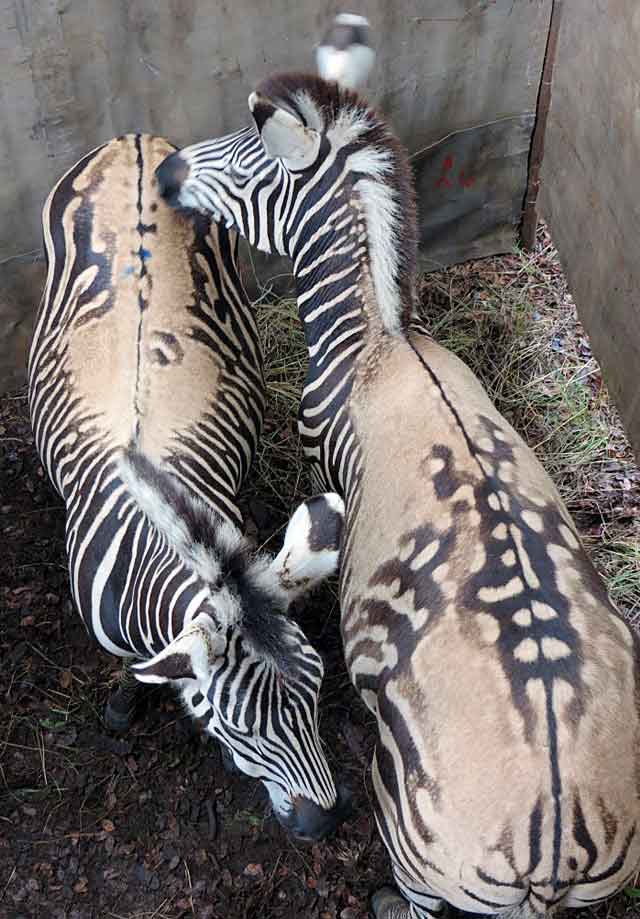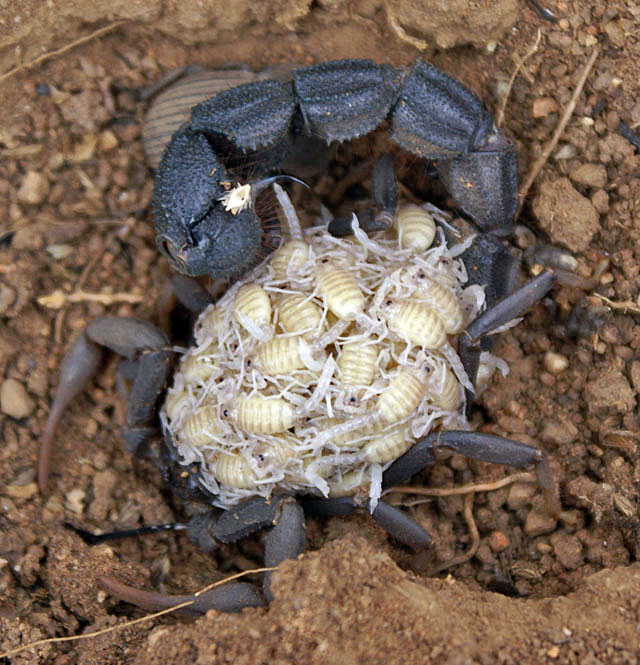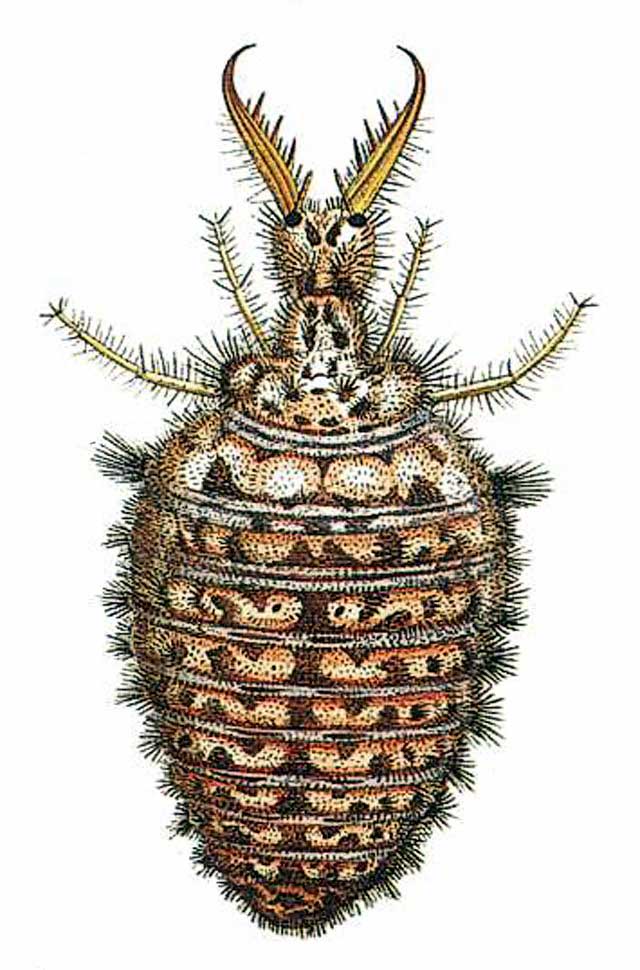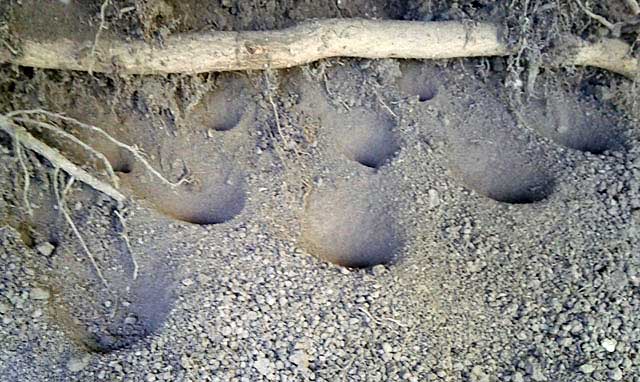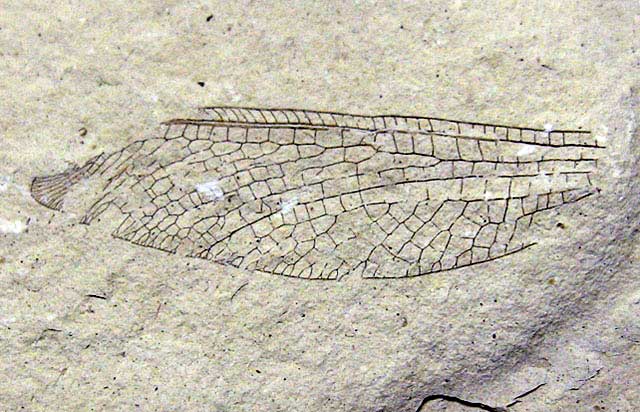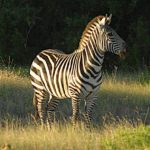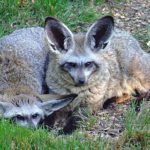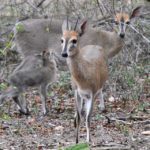It Happens TIA*
Wonders of wildlife.
Going for a walk one evening, I was brought up short by movement in my peripheral vision to my right. Sounds like a nature study! Back to the movement and looking to my right, I see nothing moving but I hear a sound of bark being scratched. Now curious, I venture a little closer to get a better view. More scratching, a scuffle and there it is, then it’s gone. That was a leguaan, scrambling almost unseen through the undergrowth. Curious as we bush people are, I am now looking for the reason this leguaan was there. I discovered a woodpecker hole high in that dead thorn tree. My first thought was, the leguaan had decided to raid for woodpecker eggs or babies.
The moon was nicely placed between the branches for a neat photo at dusk. While snapping away at this tree from various angles, I was surprised to see movement from something inside that woodpecker nest. It’s late summer and the woodpeckers should have migrated. More zoom and voila, it’s a lesser bush baby waiting for what appears to be launch time, while sleepily eyeing me out of the porthole.
The other evening I was in the same vicinity as that tree. Quietly and stealthily, I stalked the tree hoping to get photos of the bush babies leaving their new home on their way out to forage. To my delight, I saw something in the hole move when I flushed a francolin from its night’s roost, in a bush next to me.
Got it. Zoom on max, I flashed away. That flash flushed out the object from its hole, revealing none other than a woodpecker. A handsome, healthy male woodpecker. Maybe he thought it was lightning flashing and came to see where the thunder had gone.
It searched round and round the tree while I snapped away in the now fairly dark, evening light, hoping for that scarce night shot, in perfect focus, you’re unlikely to get with a 300 mm lens and flash. Later, when you edit, is the first time you see what you got or lost. Why the bark on the inside of the hole shines as if a light’s on inside must be from the flash.
So, I deduced the bush babies had borrowed this nest for winter, then left, when the woodpecker evicted them on its return home in early winter.
While considering some of the strange things, we come across in bush life, I decided to do this article on some bush oddities. Not a freak show, rather this, is life as we see it, in the common diversities of nature. We refer to these as “things that make you smile.”
The image of this mantis ootheca was given to us by a friend who, when taking down her curtains for dry-cleaning, came across this little wonder, already hatching. Interesting, because these mantis hatchlings wait until spring to appear, which of course is the time for spring cleaning? This is an unusually attractive ootheca and obviously one from our area. Praying mantis occur all over the world and even in some Arctic conditions.
Frogs three see the bright lights. Where lights are involved in froggy-land, three’s company. This can be referred to as a frog’s perfect insect delivery system. This is a tree foam nest frog. Froggy goes to Hollywood.
Even the rocks have their say in the oddities stakes. An interesting balancing act on the go here. This photo was courtesy of our last safari into the interior.
Neither bleach nor a new species. This is one of those things that happen in nature. Both of these mutant zebra came from the same area and had been captured in a group to be trans-located. For obvious reasons, they were not taken and later released. This might be a case in point of the zebra being white with black stripes, as opposed to the other way round.
After scorpion babies are born, they climb onto the mother’s back, awaiting their first moult. The length of time the young remain on the mother’s back varies from type to type, but they must go through their first moult, otherwise they cannot protect their own body moisture.
Wildlife oddities don’t come stranger than the antlion. First of all, they surround the yard with funnels in the sand to catch ants.
Now, that’s not strange in itself but it is when they fly away one night looking like a dragon fly. To my mind, it’s a dragon fly, although, in this one’s case, it’s an antlion nymph fly.
Alright, twist my arm. It goes like this, eggs are laid in the sand, they hatch and grow into the common antlion, which is actually the larva, which then spins a silk cocoon out of which is born the adult, namely the antlion or fly or something. Anyway, the nymph fly is the final stage of the antlion’s development.
In some parts of the world, the adult antlion is referred to as a lacewing. A good name, considering the detail and shape of this, more that 150 million-year-old, rock specimen.
*The meaning of the feature image, is that this scorpion has been lit by an ultraviolet light. This is one of those oddities that haven’t been fully explained by science. So it’s still an ‘I don’t know’ story. Actually, scorpions are a spider with a sting instead of a bite.
* TIA means ‘This Is Africa’ It’s a much used African colloquialism.

